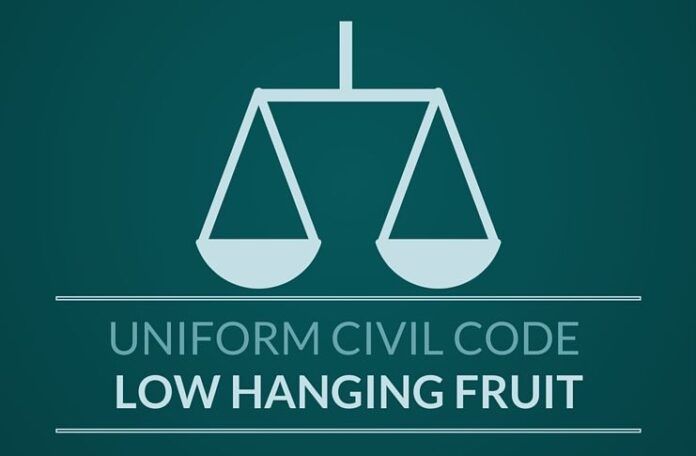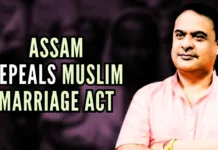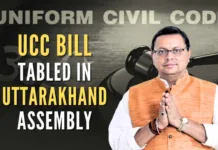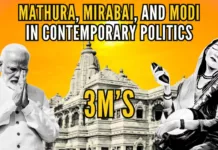
The BJP Manifesto for the 2014 General Elections includes the three core Hindutva issues of building Ram Mandir at Ram Janambhoomi in Ayodhya, Abolition of Article 370 which creates a Separate Constitution of India (As Applicable to J&K) and Uniform Civil Code abolishing separate Personal Laws of different religions. However, for two years since the swearing-in of the Narendra Modi government, not a brick moved on any of these three core issues. Come 1st July 2016 and suddenly the Law Minister D V Sadanand Gowda has asked the Law Commission headed by Retd. Justice Balbir Singh Chauhan to “examine the matter relating to Uniform Civil Code and submit a report”.
In this piece, I argue that steps towards implementation of Uniform Civil Code is a low hanging fruit for the Narendra Modi government.
Uniform civil code is an idea to replace the existing personal laws based on the scriptures and customs of each major religious community in India with a common set of civil laws governing every citizen irrespective of his or her religion. These laws cover marriage, divorce, inheritance, adoption and maintenance.
Directive Principles of State Policy enshrined in the Constitution of India sets implementation of the Uniform Civil Code as “the duty of the State” (Article 44).
Further, the Supreme Court of India has in various judgements urged the Union Government to legislate a Uniform Civil Code.
In addition to the mandate of The Constitution of India and occasional whippings of the Supreme Court of India, the arguments for a Uniform Civil Code are: need for strengthening the unity and integrity of the country, rejection of different laws for different communities, importance for gender equality and reforming the archaic personal laws, particularly of the Muslims—which is based on the Sharia and allows unilateral divorce, at the option of men, and polygamy.
In the absence of a proper draft of the proposed law, at present, the Uniform Civil Code is merely an idea or concept devoid of form which diminishes the scope of an informed debate.
An Expert Commission (comprising Judicial / Legal Experts) to draft a Uniform Civil Code including suggesting the gradual manner in which it may be implemented requires an Executive Order of the Union Cabinet, the Parliament will come into picture much later.
It may also be noted that the argument that Uniform Civil Code is in conflict with Fundamental Rights particularly Article 25 Freedom of Religion because the Supreme Court of India has adopted the view that the Fundamental Rights and Directive Principles of State Policy enshrined in The Constitution of India are complementary to each other, each supplementing the other’s role in aiming at the same goal of establishing a welfare state by means of social revolution.
Further, a draft of the proposed Uniform Civil Code will provide the opponents and proponents of the idea to share the merits and demerits of the proposal in a concrete form.
The best case scenario for the Narendra Modi Government to implement the Uniform Civil Code is to follow the sane advice of Dr. Bhim Rao Ambedkar, the principal architect of the Constitution of India, who had suggested that a possible shift to a common civil code could be voluntary at the beginning, meaning those agreeing to be bound by it be brought under it. (Dr. B R Ambedkar in the Constituent Assembly on 23 November 1948).
Since, the Ram Janmabhoomi (Birthplace) Title suit is pending before the Supreme Court of India, or the abolition of Article 370 with respect to J&K will disrupt BJP-PDP Alliance in J&K, of the 3 core Hindutva issues, Uniform Civil Code is in my opinion, the easiest and low-hanging fruit that present BJP led NDA Government can achieve.
- Social Security Payments : Tax or Savings - September 28, 2017
- India Uninc set for a giant leap post Demonetization & GST : A Contrarian opinion - September 3, 2017
- India Myanmar Strategic Economic Cooperation - September 1, 2017










